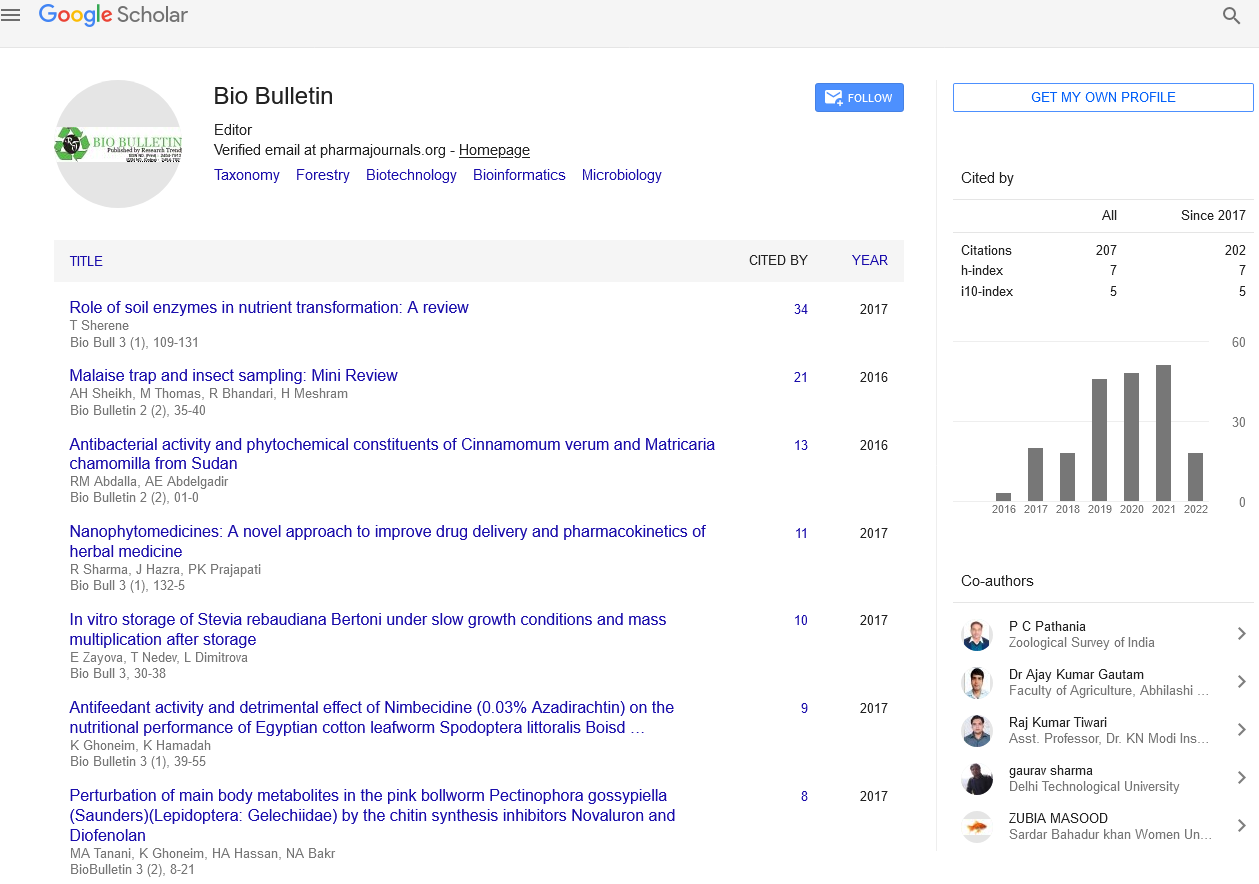Mosses and Liverworts Benefits and Virtues
Commentary - (2022) Volume 8, Issue 1
Description
Bryophytes, the tiniest and potentially oldest terrestrial plants, are a crucial element of our ecology, but there is still a lot to learn about them in the tropics. The world of mosses, liverworts, and hornworts, generally known as bryophytes and is a magnificent little forest; nevertheless, due to their modest size and lack of colourful blooms, they are sometimes missed. However, it is precisely these features that make bryophytes so fascinating in terms of evolution. Bryophytes have an intriguing, complicated biology, and the evolutionary adaptations that have allowed these plants to thrive despite their small size are remarkable.
Bryophytes, which may have evolved from green algae, are the closest extant relatives of the first terrestrial plants, these are also vital in the ecology because they colonise sterile soils, absorb nutrients and water, and slowly release them back into the ecosystem, helping to build soil for new plants to grow on, still there is a lot to learn about bryophytes, particularly in the tropics where they are less common and thus less explored, there is a rising desire to expand the study of bryophytes in the tropics in order to learn more about their evolution and significance in the region's biodiversity.
Each species has a function in nature, and each new species highlights and the importance of biodiversity; it is necessary to know how many species there are in order to understand their ecological function. It reproduces by releasing spores into the air, which are then distributed by the wind.
Bryophytes significance
Mosses, liverworts, and hornworts are all classified as bryophytes. They are non-vascular plants, meaning they do not have roots or vascular tissue and instead take water and nutrients from the air through their surface, they only reach a height of a few centimetres because they do not have roots, they may grow in locations where other plants cannot, such as on the surface of rocks, buildings, and pavement. They prefer damp, shady conditions, but they can be found in a wide range of habitats, from deserts to arctic regions, there are around 11,000 moss species, 7,000 liverwort species, and 220 hornwort species worldwide and they reproduce via spores rather than seeds because they are not flowering plants, they can produce thousands or millions of spores, which are dispersed by the wind, some organisms have amazing dispersal abilities: their spores can even reach other countries and continents, they have no roots, they can grow on practically any hard surface, including rocks, cement, brick walls, wooden constructions, and other hard surfaces.
These diminutive and often overlooked of our green world hold the key part in the evolutionary history of land plants: bryophytes mark the transition to land the origin of vascular plants, and like the seeds and vascular plants to their algal ancestors.
These can give information on how the early plants adapted to their terrestrial environment conquest, still, all present bryophyte species are recent, which means that many have vanished and their offspring have evolved, resulting in the current diversity. Particularly in tropical species, present species have enormous genetic diversity and evolutionary potential that has yet to be discovered, this new moss was named O. peristomiruptum after a rupture between the peristome teeth. It was discovered after re- examining over 400 samples of what was thought to be another species, O. albidum, this is one of four species and three subspecies has been named, every new species discovered teaches us more about how plants evolve and have evolved over millions of years.
Scientists are essentially in the inventory phase of bryophyte biodiversity; identifying bryophytes is significantly more difficult than identifying other plants, and we lack physiological, ecological, and genetic studies, these plants play a huge and crucial function in the ecology; they can collect humidity from rain or even fog, reducing floods and soil erosion by holding surplus moisture. Every new species identified adds to our understanding of how plants evolve over millions of years.
Virtues of bryophytes
These plants perform a big and important role in the ecosystem; they may collect humidity from rain or even fog, which helps to prevent floods and soil erosion by retaining excess moisture. There are more diverse groupings in Nordic regions, they cover a larger area, and their ecological roles are more obvious. Peat moss, for example, and Sphagnum, covers 8% of the province of Québec's land area. Peat moss is an effective carbon sink, a natural reservoir that stores carbon eternally, and has received a lot of attention in the fight against climate change.
However, while bryophytes are researched more thoroughly in the northern hemisphere and their ecological benefits are well understood, they are not as popular among researchers in the tropics as blooming plants.
Author Info
Ben Andrews*Citation: Andrews B (2022) Mosses and Liverworts Benefits and Virtues. Bio Bulletin, 8(1): 01-02.
Received: 02-Mar-2022, Manuscript No. BIOBULLETIN-21-62421; , Pre QC No. BIOBULLETIN-21-62421(PQ); Editor assigned: 07-Mar-2022, Pre QC No. BIOBULLETIN-21-62421(PQ); Reviewed: 21-Mar-2022, QC No. BIOBULLETIN-21-62421; Revised: 28-Mar-2022, Manuscript No. BIOBULLETIN-21-62421(R); Published: 07-Apr-2022, DOI: 10.35248/2454-7921.22.8.092
Copyright: This is an open access article distributed under the terms of the Creative Commons Attribution License, which permits unrestricted use, distribution, and reproduction in any medium, provided the original work is properly cited.

